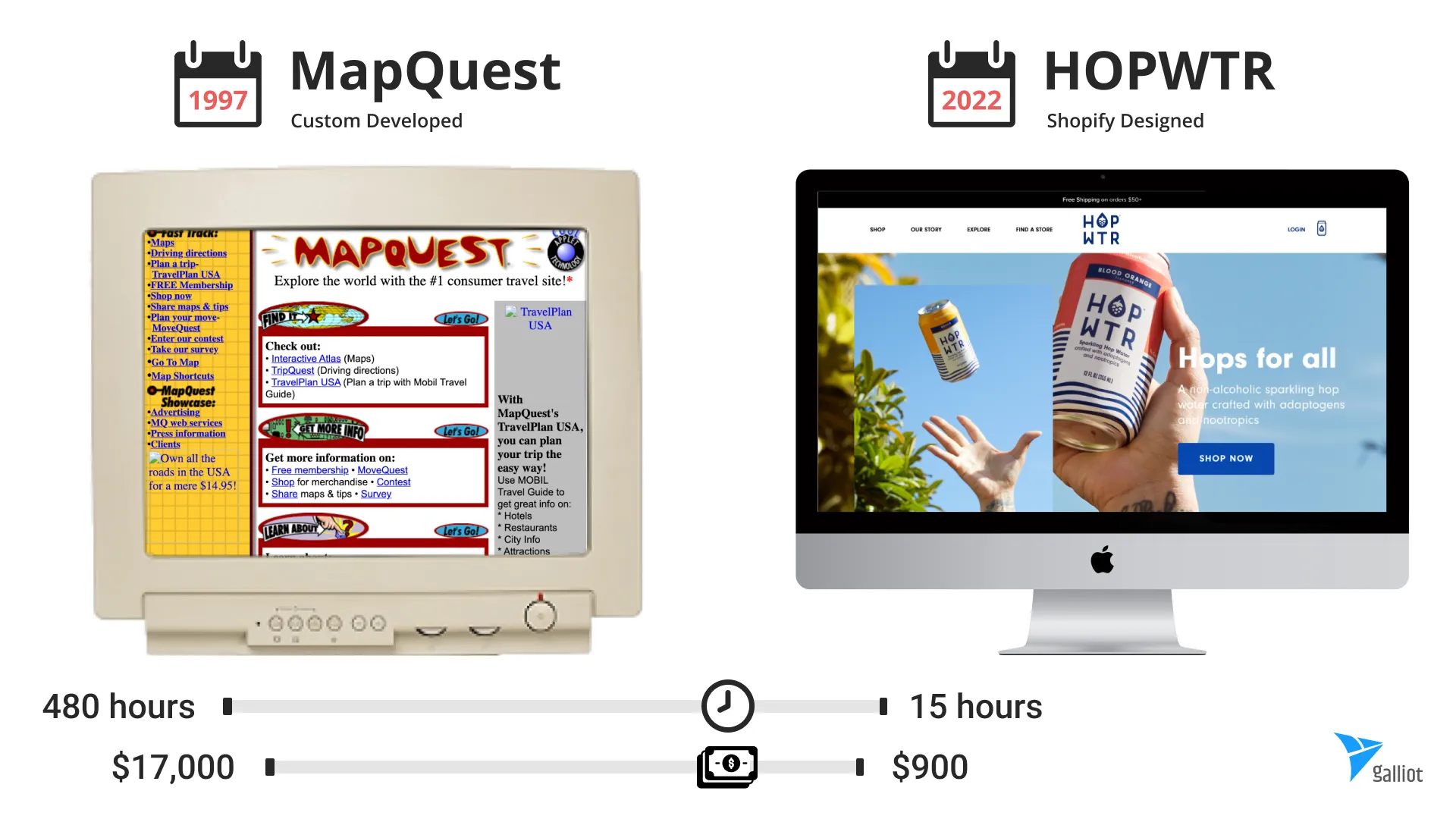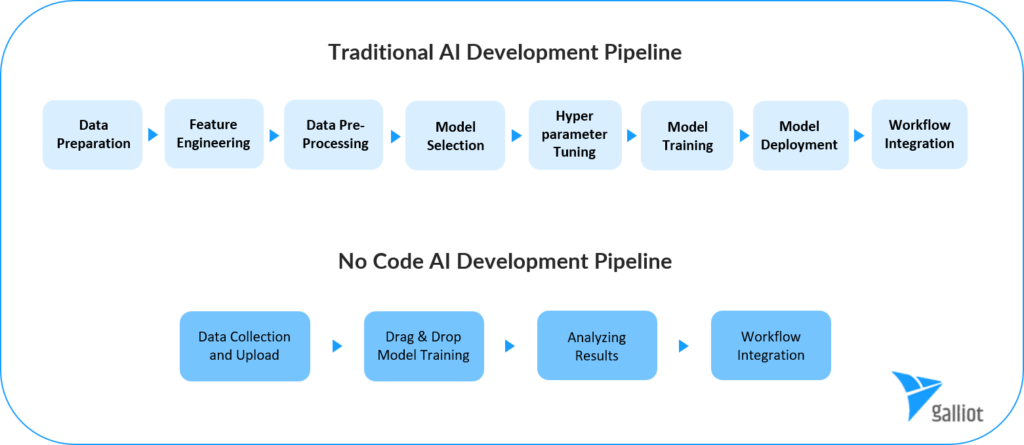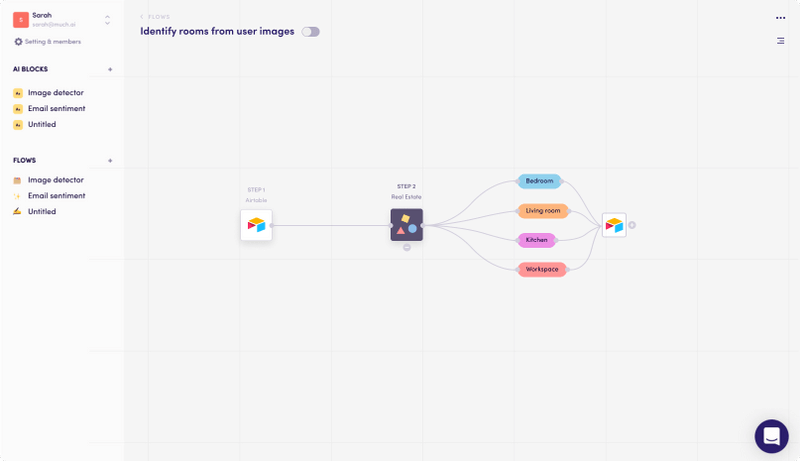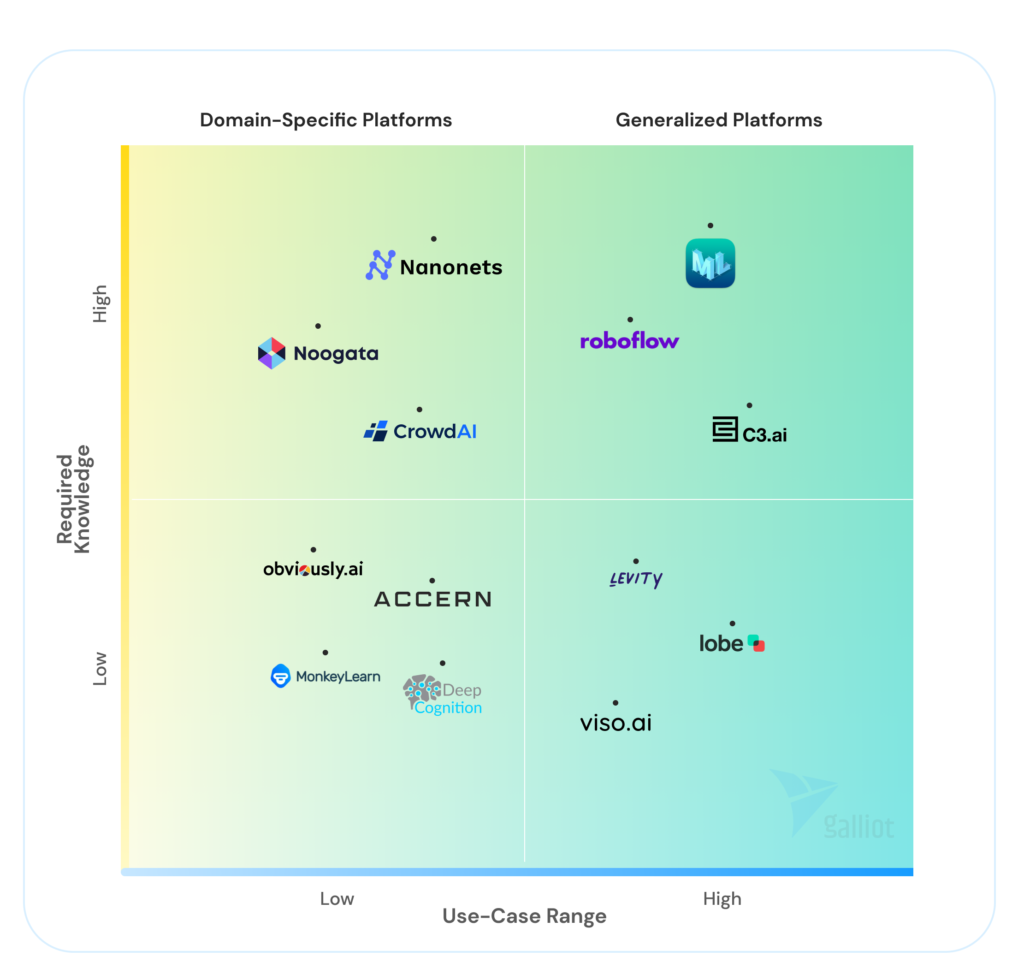Beginners Guide to Low-Code and No-Code AI

Web Development evolution over the past 25 years: From custom coding to drag-and-drop programming.
Adopting AI is going to be a must in almost every business. However, employing such systems has various challenges for companies. “No-Code AI” provides a solution for many teams and businesses to bring AI to many use cases in the future.
💡 If you’re about to develop an ML application that requires unique datasets, our guide to data labeling methodology and workflow can also help you.
Visit our blog landing for more articles like this.
1. Intro
Are Software Platforms going to steal our jobs in the future?
Will machines replace us in companies?
These are the questions that have been in people’s minds for decades. Since the Industrial Revolution and with the advent of new technologies, humans have always believed machines would eventually replace them at work. Yet, the historical trajectory shows that technology has never entirely removed workers from their jobs but has changed the way they do their tasks. Nearly every industry has experienced this in the past. For example, people had to dig transportation tunnels using shovels and pickaxes by hand. But the advent of tunnel boring machines eliminated those jobs and created new proficiencies such as maintenance specialists and operators instead. Likewise, engineers had to do massive arithmetic for structural designs; however, nowadays, there are numerous programs that do these calculations much faster. So, it doesn’t mean that engineers lose their jobs, but in fact, they have more tools in their toolbox that help them tackle the obstacles in their careers. It is the same with software engineering; new applications and platforms make things easier for developers and lead to new specialties. As a result, machines are creating new jobs and changing the type of work people do, not removing them.

Complicated development makes these new technologies hard to employ in the industry and impractical for many people. So, how can people learn and adapt to these new technologies? Building intuitive and easy-to-use development platforms is one of the actions we can take to democratize them for everyone.
In this Galliot’s blog post, we mainly talk about No-Code AI, presenting a summary of challenges through adopting AI in businesses and our experience on this topic.
In this Brainspire article, you can read more about the impacts of technology on our society and lives.
You may also enjoy reading “The History of No-Code” and its following articles by Formstack.
2. Traditional Development and AI Adoption in Business
Compared to the rapid growth of IT projects, Software Development is slow and requires expensive technical resources and a lot of experience. This problem is even more acute in Artificial Intelligence projects, where smaller businesses need to adopt an ML model to run their businesses. Forbes reported that 83% of companies consider AI a strategic priority for their businesses. However, they fail to adopt AI in their business due to high costs, the lack of AI talent, and the lack of time. In addition, most business team members do not know how to code, and developers (data scientists) might not fully understand the business requirements in some domains. As a result, individuals and companies don’t have optimal usage of AI solutions. You should know that there are several challenges companies face in AI adoption in addition to the ones we have mentioned. Nevertheless, No-code / Low-code AI can be a potential solution to solve many of these problems for businesses. Let’s take a quick look at some of the other challenges of adopting AI in businesses first.

3. Challenges of Adopting AI in Business
1- Lack of adequate or appropriate data is one of the biggest challenges in implementing AI. Data quality is always a big challenge; You can’t expect to get accurate results if your data isn’t clean, accurate, and complete. Many companies either do not store any data or don’t have a data management system to keep their data for future use.
If you are interested in Data Gathering and Labeling processes and tools, you might find this Galliot Blog Post helpful on this subject.
2- Lack of understanding of the need for AI can be another challenge in your company. Just like Newton’s first law about the tendency of objects to resist changes in a state of motion, companies have such inertia regarding changes. Specially adopting new technology like Artificial Intelligence will feel like a significant change. So, convincing the stakeholders to consider and invest in such solutions can be a big challenge here.
3- Finding a clear use case in your business for AI before implementing it is a serious challenge. Some companies try to implement AI in every aspect of their business regardless of the use case it is being implemented. This way, there will be no way to observe and assess AI performance and its values. Consequently, it will make decision-makers feel indifferent toward this technology.
4- Integration complexity of some AI solutions makes it difficult for many businesses to implement them in their companies’ pipelines.
5- Lack of trust in AI decisions and results, security concerns, data privacy, and ethical issues are some other challenges to adopting AI in companies.
4. Drag & Drop an ML Model?
Although “Low-Code Programming” may seem like a new field, its idea has been around for over 35 years. Rapid Application Development platforms such as Excel and WordPress implemented this technology years ago, allowing more people to manipulate data and develop web pages without coding. With low-code development, those without a high-level understanding of computer science can build applications and websites without writing a lot of code by hand. Low-code Development Platforms (LCDPs) provide a simple Graphical User Interface, enabling everyone in a company to define inputs, outputs, and necessary operations through a visual drag-and-drop functionality.
Note: Since low-code and no-code are generally the same and have few differences in details, we have mostly used the term “no-code AI” in the following lines. So, you can think of them as the same concept here.

No-code AI is not a new concept as well, but it’s one that has gained significant traction over the past few years. No-code AI is a new way to build your product. You don’t have to be a developer to use it, and it doesn’t require coding skills. It’s a simple drag-and-drop interface that allows you to build the product you need, even if you’ve never built one before. A no-code AI solution is an application that uses low-code development platforms designed for AI problems to train and deploy AI & ML models. No-code AI platforms aim to help non-technical users in different steps, such as data labeling, data classification, building high-accuracy models, and making predictions.
So what does all this mean for you? Well, if you’re a business owner who does not have time to learn how to code or looking for an easier way to adopt AI in your business, then no-code AI should definitely be on your radar!
Although there are various domain-specific no-code AI platforms (mentioned in section 6), remember that no-code development has limitations and can not be practical in all industries/domains. We will further discuss these limitations in the following section.
5. Does No-Code AI Really Work?
A no-code AI platform reduces the barriers to building and deploying AI models for small businesses. By providing a simple visual tool, they also help companies use their domain experts to adopt AI capabilities in various aspects of their work. It’s often faster, cheaper, and easier to build than traditional software development since you don’t need to hire programmers or write any code. Despite the advantages no-code AI offers to business owners (especially for small-to-medium-sized companies), it is not the perfect solution for every situation.
No-code AI systems are mainly reliable for general (well-known) problems with robust solutions. There are fewer options for customization in no-code than you might find with normal development. This can be limiting for certain types of businesses with particular needs. So if you want to create something unique or you are going to do original work, it may not be possible with no-ode development.
For example, if you want to build something like an augmented reality game or something with complicated graphics, then no-code AI may not be able to handle it.
Plus, when using LCDPs to develop an AI application, companies may face security breaches due to a lack of user experience in information security. Furthermore, these platforms offer limited integration options that may even make the developed application unusable.
| Pros | Cons |
|---|---|
| Combining the Business Experience and AI Power | Lower Flexibility and Limited Customization |
| Higher Speed | Lower Security |
| Lower Cost | Harder to Integrate |
6. AI Low-Code Development Platforms (LCDPs)
The AI/ML field is witnessing many startups and companies that develop great tools for building and deploying AI/ML models with little hand-coding and technical knowledge. Some platforms give you more control over your model, such as changing your model’s hyperparameters, while others handle the whole setup for you.
We have several platforms for general use cases and some specialized ones for domain-specific applications. Some can solve a specific business problem, such as advertising or marketing, and some are more general and agnostic to use cases, such as computer vision and natural language processing (NLP). You can see some of the popular platforms offering no-code/low-code AI development solutions in Figure 3. We have categorized these platforms based on the technical background required for using them and their domain specificity.

6.1. Generalized No-Code AI Platforms
CreateML by Apple and Lobe by Microsoft are two of the most known platforms providing No-Code AI tools. CreateML is a tool for building and training powerful ML models on image, audio, video, and text, available for Mac devices. Lobe focuses on the image; it gives you simple tools for labeling your data and training and deploying models with no further configuration or setups.
Viso.ai: It is a no-code platform for developing computer vision applications. Viso.ai offers you everything you need to build a vision-based application, from data collection to deployment and maintenance.
Clarifai: It offers a low-code AI platform with out-of-the-box tools for labeling, training, and deploying various models. They offer various computer vision and NLP solutions in different industries such as E-commerce, Insurance, Manufacturing, Media & Entertainment, etc.
Levity: Simple but powerful AI for documents, images, and text that automates your daily repetitive tasks. Connect your workflows in minutes without a single line of code.
Roboflow: It is a computer vision-based no-code platform. You can easily train various computer vision models for diverse applications using Roboflow.
C3 AI: Provides enterprises with AI applications that meet the business-critical needs of global enterprises in manufacturing, financial services, government, utilities, oil and gas, chemicals, agribusiness, defense and intelligence, and more.
6.2. Domain-Specific No-Code AI Platforms
MonkeyLearn: It is a no-code Text Analytics tool especially favorable for SMEs to improve their marketing. MonkeyLearn makes it simple to clean, label, and visualize customer feedback.
DeepCognition: Data Capture and Data Entry Automation with AI to increase efficiency and reduce cost while increasing accuracy across various industries.
CrowdAI: A tool built on computer vision to improve Visual Inspection, mainly in industrial space. They offer various solutions for defect detection, automatic inspections, disaster response, vegetation management, etc.
Accern: Make Better Decisions, Reduce Risk, Spot Opportunities. Extracting fast, accurate & valuable insights from unstructured text data.
Nanonets: Automate Data Entry, Workflow Integration, OCR. Capture data from documents instantly. Reduce turnaround times and the manual effort required.
ObviouslyAI: Marketing, Project Management, Automation, Data prediction. Connect to your favorite data source, make predictions, and share them with your team.
Noogata: eCommerce and Marketing. It is a solution that combines your eCommerce marketplaces, consumer channels, and online advertisement to increase your revenue. Build your eCommerce Analytics Warehouse.
7. Conclusion
Undoubtedly, “No-Code AI” empower teams and businesses to bring AI to many use cases in the future. In this article, we discussed what is “No-Code AI”, some of the interesting examples of that in the market, and the challenges and benefits of using them. We hope this can help you have a framework to assess how to implement no-code AI in your problems.
💡 If no-code AI is not a fit for your problem, don’t worry. At Galliot, we have a brilliant team of experts to design, build and maintain solutions using the latest AI technologies. Get in touch with us using the Contact button below or directly email us via hello@galliot.us
Please share your thoughts and suggestions with us using the comment section below. We would be happy to see your comments about this blog post.
Get Started
Have a question? Send us a message and we will respond as soon as possible.
Leave us a comment